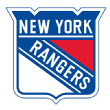Could this be the start of something more?
That question could be asked of both the Anaheim Ducks and the New York Rangers after the first major trade this offseason. On Thursday, the Rangers sent Chris Kreider and a 2025 fourth-round pick (Anaheim’s own, previously acquired in the Dec. 2024 Jacob Trouba trade) to the Ducks for prospect center Carey Terrance and a 2025 third-round pick (Toronto’s, acquired in the Feb. 2024 Ilya Lyubushkin trade).
Here’s a glance at what this means for both franchises along how they each performed.


There was a need to create salary cap space. There were the questions about production. There was also the fact that the Rangers could find a replacement elsewhere.
All told, there were many reasons that influenced the Rangers’ decision to move on from Chris Kreider.
Kreider scored 20 or more goals for the seventh straight season and for the 10th time in his career. That consistency is what came to define Kreider, but it became one of the reasons why a move out of New York seemed likely.
Kreider turned 34 in late April, at the end of a season in which he scored 22 goals; however, that was a decline from what he had done the last three years. He scored 36 or more goals in each of the last three seasons, while averaging 69 points per campaign in that time. He finished with 30 points in 68 games this season, for a 0.44 points-per-game average.
With two years left on his contract worth $6.5 million annually, it became a numbers game for the Rangers.
Star goaltender Igor Shesterkin signed a new contract that starts in 2025-26 that ramps up his annual salary from $5.67 million to $11.50 million. There were also the series of in-season trades that Rangers GM Chris Drury made to get Will Borgen and J.T. Miller that led to them taking on an additional $12.1 million per year; Borgen signed a five-year extension worth $4.1 million annually, and Miller is entering the second of a seven-year pact in which he’ll earn $8 million annually.
This left the Rangers needing to find solutions to address a seven-player restricted free agent class led by K’Andre Miller, Zac Jones, Matthew Robertson, and Will Cuylle.
That’s not to say there aren’t questions about how they’ll replace Kreider’s production.
It’s what made the spring signing of Boston College star winger Gabe Perreault important, because it gives the Rangers a potential top-six option on a team-friendly deal, while allowing them to create the necessary space to address that RFA class — on top of everything else they may seek to achieve this offseason.
The Rangers now have $14.922 million in cap space after shedding Kreider’s contract, per PuckPedia. That provides the front office with more financial flexibility than they initially possessed, with the notion they might not be done.
Adding Terrance, who signed with the Ducks in April, adds a prospect center to a system that appeared to need one. Their strongest prospect down the middle, Noah Laba, signed with the club after three seasons at Colorado College, while Dylan Roobroeck’s first full professional campaign included 20 goals in the AHL.
Terrance, who was a second-round pick in 2023, had his third straight 20-goal season for the OHL’s Erie Otters; overall, he finished with 39 points in 45 games. He also represented Team USA at the IIHF World Junior Championships, where he had two goals in seven games before sustaining an injury.

Rebuilds are all about ending up in a better place, with the notion that all of them take a different path to reach that desired destination. The Kreider trade is a signal that the Ducks are remaining steadfast in an approach that has served them well so far, with the belief it could lead to them either reaching the playoffs or at least be in the wild-card discussion in 2025-26.
For all the conversations about how they have drafted and developed, the Ducks have also made a concerted effort to insulate that homegrown young core with respected veterans. It’s a veteran group that includes Radko Gudas, Alex Killorn, Frank Vatrano, and Krieder’s former Rangers teammate Jacob Trouba.
So what does this mean for the Ducks’ top-nine winger setup? Kreider adds to a group that has Sam Colangelo, Cutter Gauthier, Troy Terry, Killorn, and Vatrano. Not only does it provide the Ducks with goal-scorers in general, but also with players who can grab those goals in a variety of ways.
And this is what makes the Ducks either fascinating — or terrifying — depending upon the perspective. Ducks GM Pat Verbeek just took on a forward with a $6.5 million cap hit, and PuckPedia projects he still has more than $32.188 million in available space.
This is what could make Katella Avenue a destination come free agency on July 1.
Of course, Verbeek must act responsibly. Lukas Dostal, Drew Helleson and Mason McTavish, who are part of the Ducks’ young core, are each pending RFAs that need a new contract. Then there’s what lies ahead next offseason, when Leo Carlsson, Jackson LaCombe, Pavel Mintyukov, Trevor Zegras, Olen Zellweger, and Gauthier will all need new deals at the same time.
Possessing that much young talent on cheap contracts creates financial flexibility. It’s why they were able to add Kreider for the price of a draft pick and a prospect in Terrance, who was expendable because of their center situation in the NHL and Lucas Pettersson, their second-round pick in 2024, in the system.
Ever since their rebuild started, the Ducks have been a franchise that’s been about trying to make progress by any means necessary. They’ve developed one of the NHL’s most promising farm systems in that time, and cultivated an expectation for their prospects. All the while, they’ve known when to make the moves like the one that got them Kreider.
Now what?
Finishing with 80 points for the first time since the 2018-19 season has them at a critical point. It’s part of the reason why they moved on from head coach Greg Cronin after two seasons to hire Joel Quenneville with the premise that they feel they can go further.
Because that’s what it means to play in the gauntlet that has become the Western Conference. For all the established contenders like the Edmonton Oilers, Dallas Stars, Vegas Golden Knights and Colorado Avalanche, there are still other teams that can carve a path.
The Seattle Kraken did it in their second season back in 2022-23. A year later, the Vancouver Canucks did it in their first full season under Rick Tocchet in 2023-24. This season saw the St. Louis Blues return to the playoffs, while the Calgary Flames and Utah Hockey Club pushed until the latter stages of the regular season.
Anaheim finished 16 points out of the final Western Conference wild-card spot. But the gradual improvement the Ducks have shown — along with the fact they have made two of the bigger moves this offseason, believing they could do more — could see them knocking on the door to the postseason, or kicking right through it.
Source link
